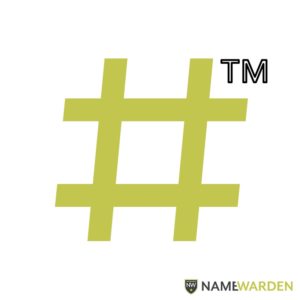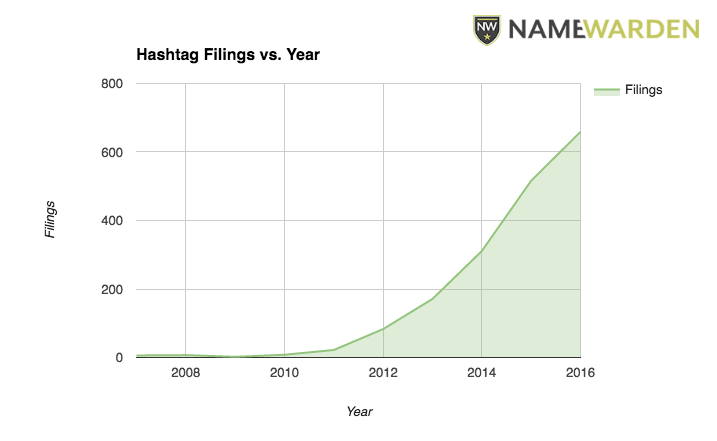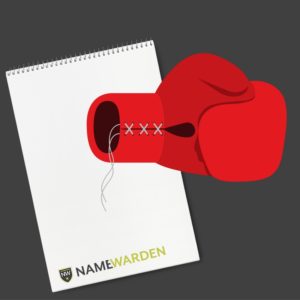Watch What You Tweet: Hashtag Trademarks are Soaring
The 2016 Summer Olympics was a wake-up call to marketers and business owners who thought they  could get in on the Olympic buzz by using the popular Olympic hashtags on social media. They may have joined the conversation, but they probably also found a cease and desist letter or email for using trademarked hashtags on their business social media accounts. That’s right, hashtag trademarks are a thing.
could get in on the Olympic buzz by using the popular Olympic hashtags on social media. They may have joined the conversation, but they probably also found a cease and desist letter or email for using trademarked hashtags on their business social media accounts. That’s right, hashtag trademarks are a thing.
2016 is not the first year that hashtags have been trademarked, but it seemed like the first major instance of a hashtag trademark owner cracking down. This piqued our curiosity, so we looked into the filing trends for terms starting with the pound sign (#). We found filings all the way back to 1963! No, they weren’t using hashtags in 1963, those filings were for terms like #1, and a few were for items like #$!? (cartoon cursing?).
The first online use of the pound sign was in the 1990s by IRC (Internet Relay Chat) users. It was used to categorize items into groups. The hashtag as we know it now was invented in 2007 by Chris Messina, who suggested that the symbol be used to organize groups on Twitter. The tweet looked like this:
?how do you feel about using # (pound) for groups. As in #barcamp [msg]??
The purpose was to organize and gather discussions going on at a technology event called Barcamp.
The hashtag has since been used by most of the social media platforms out there and is an important part of every business’ marketing strategy – hence the reason people started trademarking hashtags.
We wanted to see the trademark trends for hashtags so we limited our search to # followed by a letter (to remove all of the non-hashtag “#1” type things), and cut the timeline to 2007. Here’s what we found.
There have been 452 hashtag terms filed through Day 251 out of 366 days in 2016. If we take that out to the full year, we are on pace for 659 in 2016. Here are some hashtags you might recognize:
- #Girlboss
- #HowDoYouKFC
- #BeYou
- #RunThisTown
- #SupportLocal
- #WalmartElves
- AT&T Presents #BeTheFan
- #SrirachaGouda
- Playboy #Generation
- #LikeAGirl
- #IceBucketChallenge (also #ALSIceBucketChallenge)
- #ThrowbackThursday
- #CokeCanPics
- #SmileWithACoke
- #LifeonMars
- #RioReady
- #LoveIsLove
- #BlackLivesMatter
- #PaylessShoeSource
It’s clear that hashtag trademarks are becoming more prevalent so watch what you hashtag and make sure your clients start trademarking their own branded hashtags.


